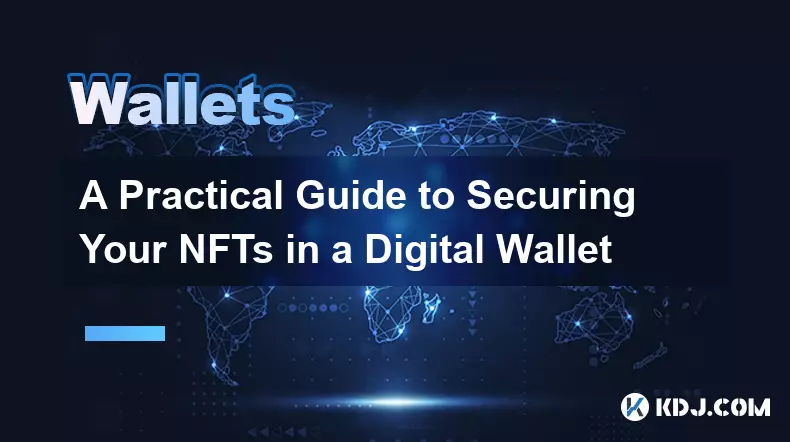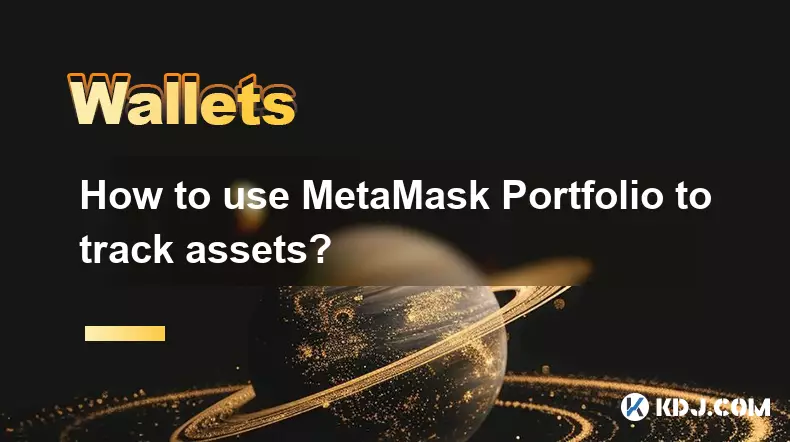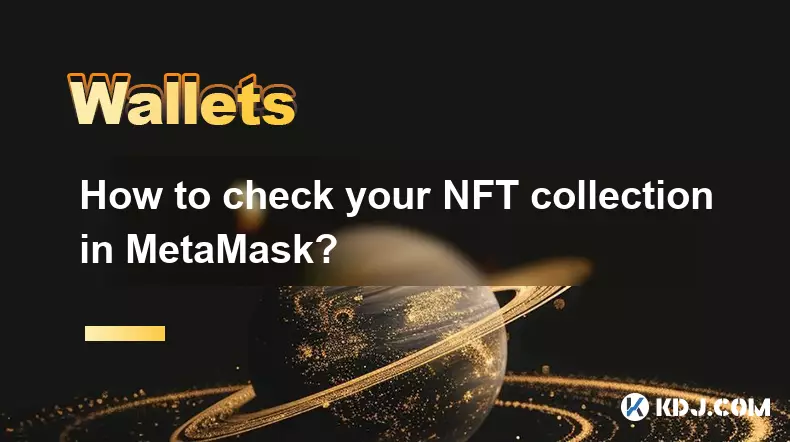-
 bitcoin
bitcoin $101752.865364 USD
-1.09% -
 ethereum
ethereum $3382.985899 USD
-1.38% -
 tether
tether $0.999658 USD
0.04% -
 xrp
xrp $2.272505 USD
-1.51% -
 bnb
bnb $989.089004 USD
0.14% -
 solana
solana $156.962612 USD
-3.08% -
 usd-coin
usd-coin $0.999776 USD
0.01% -
 tron
tron $0.290786 USD
-0.69% -
 dogecoin
dogecoin $0.174594 USD
-2.86% -
 cardano
cardano $0.560085 USD
-3.55% -
 hyperliquid
hyperliquid $40.023704 USD
-5.75% -
 chainlink
chainlink $15.324649 USD
-2.78% -
 bitcoin-cash
bitcoin-cash $493.576540 USD
-3.52% -
 zcash
zcash $571.320038 USD
-12.05% -
 stellar
stellar $0.280066 USD
-4.26%
A Practical Guide to Securing Your NFTs in a Digital Wallet
Protect your NFTs by safeguarding your seed phrase, using hardware wallets, and avoiding phishing scams—your private keys are the foundation of ownership and security.
Nov 03, 2025 at 04:55 am

Understanding NFT Wallet Security Fundamentals
1. NFTs, or non-fungible tokens, exist on blockchain networks such as Ethereum, Solana, and Polygon, making digital wallets essential for ownership and management. These wallets do not store the actual asset but rather the private keys that prove ownership and enable transactions. Protecting these keys is the foundation of NFT security. Without proper safeguards, users risk irreversible loss due to theft or mismanagement.
2. Wallets come in two primary forms: custodial and non-custodial. Custodial wallets, like those offered by centralized exchanges, manage private keys on behalf of users. While convenient, they introduce third-party risks. Non-custodial wallets, such as MetaMask or Phantom, place full control in the user’s hands. This autonomy demands a higher level of personal responsibility.
3. The seed phrase—typically a sequence of 12 or 24 words—is the master key to any non-custodial wallet. If compromised, an attacker can fully access all assets within the wallet, including NFTs. Storing this phrase digitally, especially in cloud storage or unencrypted files, dramatically increases exposure to hacking attempts.
4. Phishing attacks are among the most common threats in the NFT space. Fraudulent websites and emails mimic legitimate platforms to trick users into revealing their seed phrases or signing malicious transactions. Users must verify URLs and avoid clicking links from unsolicited messages.
Best Practices for Protecting Your NFT Holdings
1. Always use hardware wallets, such as Ledger or Trezor, for storing high-value NFTs. These devices keep private keys offline, shielding them from internet-based threats. Even when connected to software interfaces like MetaMask, the keys never leave the secure environment of the device.
2. Enable multi-signature setups where available. Multi-sig wallets require multiple approvals before executing a transaction, adding a layer of authorization that mitigates the risk of unauthorized access. This method is particularly effective for community-owned or collaborative NFT projects.
3. Regularly audit your wallet’s connected dApps. Many NFT marketplaces and games request permission to interact with your wallet through token approvals. Over time, these permissions accumulate and can be exploited. Use tools like Revoke.cash to review and revoke unnecessary access rights.
4. Avoid connecting your wallet to unknown or unverified websites. Scammers often create fake versions of popular NFT platforms to harvest session data or trick users into signing harmful smart contracts. Double-check domain names and look for verified badges on social media channels.
Recovering and Responding to NFT Theft
1. In the event of unauthorized transactions, act immediately. Disconnect your internet connection and power down devices if you suspect malware. Transfer remaining assets to a new wallet generated from a fresh seed phrase. Never reuse compromised keys or associated addresses.
2. Document all transaction hashes related to the theft. Blockchain explorers like Etherscan allow users to trace movements of stolen NFTs. While recovery is difficult, providing evidence to law enforcement or platform moderators may help freeze or flag illicit transfers.
3. Report the incident to relevant platforms. Marketplaces such as OpenSea have reporting mechanisms for stolen items. Some communities also maintain blacklists to prevent resale of known stolen NFTs. Prompt reporting increases the chances of containment.
4. Consider public disclosure via social media or dedicated forums. The NFT community often collaborates to track bad actors. Sharing details without revealing sensitive information can mobilize collective vigilance and deter further exploitation.
Frequently Asked Questions
What should I do if I accidentally reveal my seed phrase?Immediately stop using the wallet. Transfer all assets to a new wallet created with a completely new seed phrase. Never enter the compromised seed phrase into any online service, as this could expose it further.
Can stolen NFTs be frozen or reversed?Blockchains are designed to be immutable, so transactions cannot be reversed. However, some marketplaces support freezing listings of reported stolen NFTs. Legal action may also compel platforms to restrict transfers under certain jurisdictions.
Is it safe to store NFTs on exchanges?Storing NFTs on exchanges means relying on their custodial infrastructure. While reputable platforms implement strong security, users forfeit direct control. For long-term ownership, transferring NFTs to a personal non-custodial wallet is recommended.
How can I verify the authenticity of an NFT marketplace?Check for official website domains, HTTPS encryption, and verified social media accounts. Look for community endorsements and audit reports from blockchain security firms. Bookmark trusted sites to avoid accidental navigation to impostor pages.
Disclaimer:info@kdj.com
The information provided is not trading advice. kdj.com does not assume any responsibility for any investments made based on the information provided in this article. Cryptocurrencies are highly volatile and it is highly recommended that you invest with caution after thorough research!
If you believe that the content used on this website infringes your copyright, please contact us immediately (info@kdj.com) and we will delete it promptly.
- Ripple (XRP) in 2026: Hold or Fold? A Look at XRP's Future and Emerging DeFi Alternatives
- 2025-11-08 18:35:01
- Zcash ZEC Coin Price Explosion: From Privacy Niche to Center Stage
- 2025-11-08 18:55:01
- Berachain Price Prediction: Navigating the Honeycomb Hype in Crypto
- 2025-11-08 18:55:01
- Arthur Hayes, Gold, and Bitcoin: A Modern Monetary Trinity?
- 2025-11-08 19:15:01
- Shiba Inu's Next Move: Navigating a Shifting Market
- 2025-11-08 19:20:01
- Pakistan's Crypto Crossroads: Balancing Opportunity with Asset-Backed Realities
- 2025-11-08 19:20:01
Related knowledge

How to use MetaMask Portfolio to track assets?
Nov 08,2025 at 05:40am
Getting Started with MetaMask Portfolio1. Download and install the MetaMask mobile app from the App Store or Google Play. Open the app and select 'Imp...

How to send ETH from Binance to MetaMask?
Nov 10,2025 at 04:40am
Sending ETH from Binance to MetaMask: A Step-by-Step GuideTransferring Ethereum (ETH) from your Binance account to your MetaMask wallet is a common op...

How to check your NFT collection in MetaMask?
Nov 06,2025 at 08:20pm
Accessing Your NFTs in MetaMask Wallet1. Open the MetaMask browser extension or mobile app and ensure you are logged into your wallet account. Once in...

Why is the MetaMask swap feature failing?
Nov 06,2025 at 09:20pm
Understanding MetaMask Swap FailuresMetaMask, one of the most widely used cryptocurrency wallets, enables users to swap tokens directly within the int...

How to update the MetaMask extension in Chrome?
Nov 08,2025 at 07:39am
Updating the MetaMask extension in Chrome is a simple process that ensures you have access to the latest security features, performance improvements, ...

How to import an account into MetaMask using a private key?
Nov 07,2025 at 07:40am
Importing an Account into MetaMask with a Private KeyMetaMask is one of the most widely used cryptocurrency wallets, particularly within decentralized...

How to use MetaMask Portfolio to track assets?
Nov 08,2025 at 05:40am
Getting Started with MetaMask Portfolio1. Download and install the MetaMask mobile app from the App Store or Google Play. Open the app and select 'Imp...

How to send ETH from Binance to MetaMask?
Nov 10,2025 at 04:40am
Sending ETH from Binance to MetaMask: A Step-by-Step GuideTransferring Ethereum (ETH) from your Binance account to your MetaMask wallet is a common op...

How to check your NFT collection in MetaMask?
Nov 06,2025 at 08:20pm
Accessing Your NFTs in MetaMask Wallet1. Open the MetaMask browser extension or mobile app and ensure you are logged into your wallet account. Once in...

Why is the MetaMask swap feature failing?
Nov 06,2025 at 09:20pm
Understanding MetaMask Swap FailuresMetaMask, one of the most widely used cryptocurrency wallets, enables users to swap tokens directly within the int...

How to update the MetaMask extension in Chrome?
Nov 08,2025 at 07:39am
Updating the MetaMask extension in Chrome is a simple process that ensures you have access to the latest security features, performance improvements, ...

How to import an account into MetaMask using a private key?
Nov 07,2025 at 07:40am
Importing an Account into MetaMask with a Private KeyMetaMask is one of the most widely used cryptocurrency wallets, particularly within decentralized...
See all articles





















![The Graph Price Prediction [GRT Crypto Price News Today] The Graph Price Prediction [GRT Crypto Price News Today]](/uploads/2025/11/07/cryptocurrencies-news/videos/690d4df44fe69_image_500_375.webp)




















































